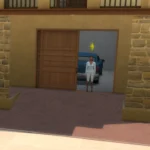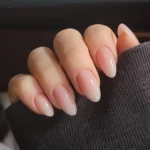If you’re looking to switch up your hair color, it can be overwhelming to figure out where to start. With so many options and techniques available, it’s essential to understand the basics of hair color placement diagrams. These diagrams can help you visualize where your stylist will apply color to achieve your desired look.
What Are Hair Color Placement Diagrams?
Hair color placement diagrams are visual guides used by stylists to map out where color will be applied to a client’s hair. They help ensure that the color is placed in the right areas to achieve the desired result, whether it’s highlights, lowlights or all-over color.

Why Are Hair Color Placement Diagrams Important?
Hair color placement diagrams are important because they provide a roadmap for the stylist to follow. Without a diagram, it’s easy for the color application to become haphazard, leading to an uneven or unflattering result. By using a diagram, the stylist can ensure that the color is applied in a way that enhances the overall look of the hair.
How Are Hair Color Placement Diagrams Created?
Creating a hair color placement diagram starts with a consultation between the client and stylist. The client explains what they want to achieve, and the stylist takes into account their hair type, texture, and current condition. From there, the stylist will evaluate the client’s hair and create a diagram that outlines where the color will be applied.
Different Types of Hair Color Placement Diagrams
There are several different types of hair color placement diagrams that stylists use, depending on the desired outcome. Here are some of the most common:
Foil Highlighting Diagram
A foil highlighting diagram is used to create highlights throughout the hair. The stylist will separate sections of hair and apply color to each section before wrapping it in foil to process. This technique creates a natural look that adds dimension and depth to the hair.
Balayage Diagram
Balayage is a French word that means “to sweep.” It’s a technique where the stylist hand-paints color onto the hair to create a natural, sun-kissed look. A balayage diagram is used to map out where the color will be applied and to ensure that it’s blended seamlessly throughout the hair.
Ombre Diagram
An ombre diagram is used to create a gradual fade from one color to another. The stylist applies color to the ends of the hair and then blends it upwards towards the roots. This technique creates a dramatic effect that looks great on long hair.
Root Touch-Up Diagram
A root touch-up diagram is used to apply color to the new growth at the roots of the hair. This technique is ideal for clients who want to maintain their current hair color but need to cover up gray hair or regrowth.
How to Read Hair Color Placement Diagrams
Reading a hair color placement diagram can be intimidating if you’re not familiar with the terminology. Here are some common terms you’ll see on a diagram:
Weave
A weave refers to the amount of hair that’s taken for highlighting. A full weave involves taking thin sections of hair from all over the head, while a partial weave only takes sections from specific areas.
Slice
A slice refers to a wider section of hair that’s colored. This technique creates a more dramatic effect and is often used for bold colors like red or purple.
Lowlights
Lowlights are darker pieces of hair placed strategically throughout the hair to create depth and dimension.
Base Color
The base color is the overall color of the hair. When creating a hair color placement diagram, the stylist will take into account the client’s base color and how the new color will complement it.
Conclusion
Hair color placement diagrams are an essential tool for stylists and clients alike. By understanding the different types of diagrams and how to read them, you can communicate more effectively with your stylist and ensure that you get the perfect color every time.
So, whether you’re looking for highlights, lowlights or a complete hair color transformation, be sure to ask your stylist about hair color placement diagrams to achieve the look you desire.






